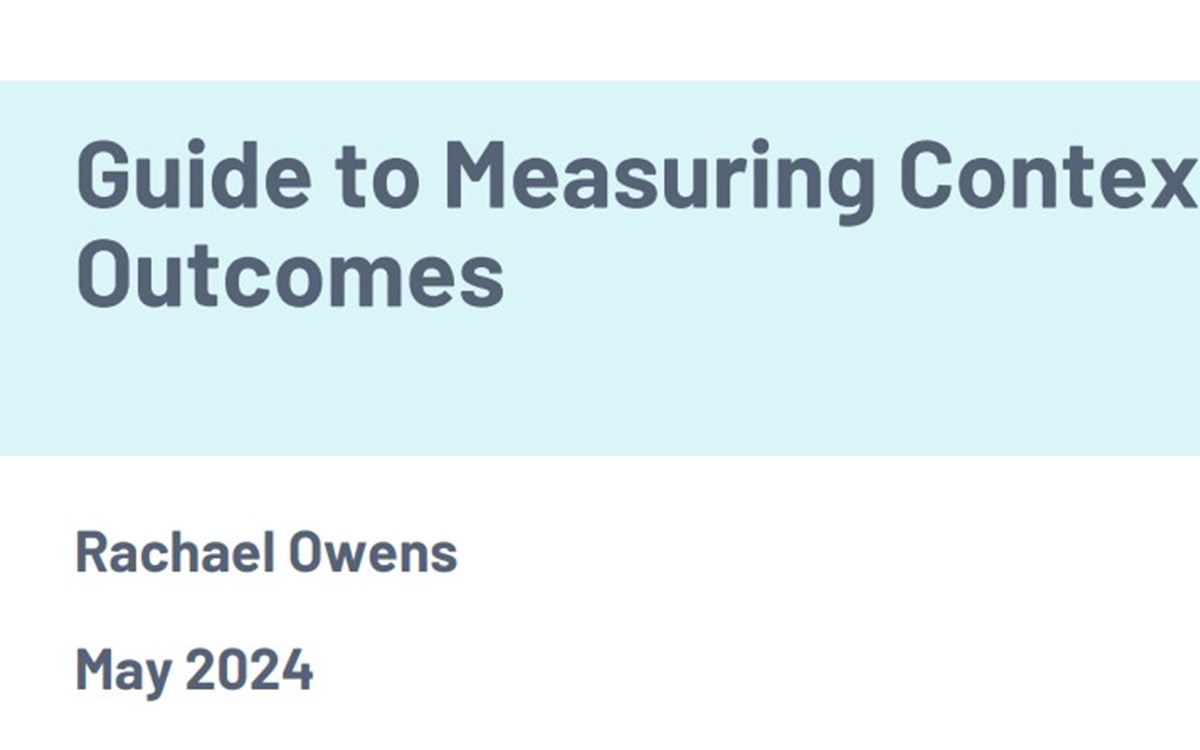How do we measure change in contexts?
The Outcomes Framework project was led by Rachael Owens from the Contextual Safeguarding team, who partnered with Swansea Children’s Service and Kent Family Group Conference service to develop and test a new framework and guide to measuring contextual change. It ran from March 2023-March 2024.
The project asked:
When we set out to create contextual safety, how do we know if we have been successful in creating a safer context for the young people that spend time there?
We learnt that measuring change to contexts is different from measuring individual change. When it comes to extra-familial harm, if we don’t have a way to measure improvements to the contextual elements that contribute to the harm, then it’s possible that these may have stayed the same. If this is the case, we may have successfully created safety for one child, but other children linked to the same context could continue to be harmed. Think about a peer group in a school where a child is being bullied. To prevent this, the child could be moved to a different school, leading to their ‘case’ being closed because the bullying has stopped. But this response has done nothing to change the context. For example, the school policy on bullying or the dynamics in the peer group may both be part of the contextual factors enabling the bullying to take place. Without changing these things its possible for another child to ‘replace’ the original child and be harmed in the same way.
The Outcomes Framework helps us to focus on, and clearly describe, what needs to change contextually, not just for individual children. It helps us to set goals that are linked to contextual change and work out what measures will show us we’ve reached these goals. The framework provides a comprehensive way of deciding when it’s appropriate to close a context-focussed response and when more work is needed.
The Outcomes Framework project came about to give those leading contextual welfare-led responses a way to ground their outcome measurements in ecological and social care principles. When we work in spaces outside the home, especially in public spaces, it can be tempting to use community safety or police data to try to measure change. During this project we realised that this type of data does not provide an accurate picture of the sorts of change we seek to create in Contextual Safeguarding. Instead, we needed measures that allow us to track whether young people have had their safety and welfare needs met through positive and strengths-based responses; whether there is positive adult guardianship in a context; and how well the wider environment and resources support both of these. We also need outcomes measurements that centre caring and positive relationships with young people and a framework that allows us to approach each context – like every family - as unique.

This guide explains what we mean by measuring outcomes contextually and explains how to use the Contextual Outcomes Framework.
The Outcomes Framework and guide covers:
- What is a contextual outcome?
- Setting contextual goals
- What we mean by contextual data
- Arriving at meaningful measures
- When to close a contextual ‘case’



